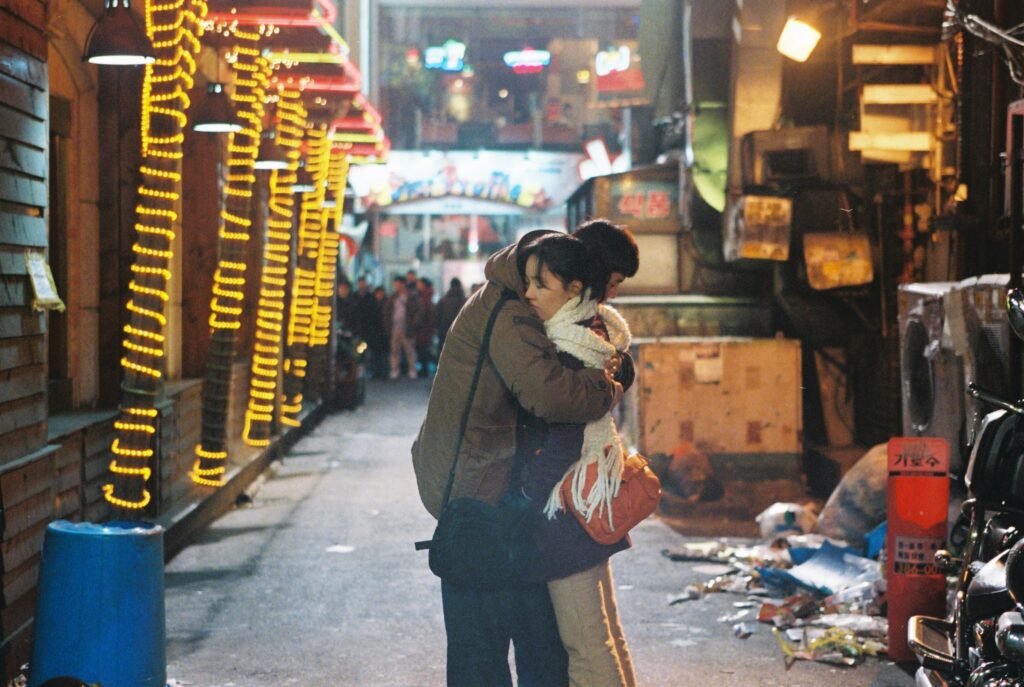In 2005’s Tale of Cinema, as in most of Hong Sang-soo’s works, structure is part of the story. The film is split into two halves, the first of which comprises a short film by a director that people keep mentioning (but whom we don’t really have the chance to meet until part two). ‘Film-world’ and diegetic reality intertwine in Tale of Cinema through many shared elements — but especially with the presence of actress Choi Young-Shil (Uhm Ji-won). Another shared element between Tale of Cinema’s two halves is the theme of death. The film-within-a-film is about suicide: On the street, Jeon Sang-won (Lee Ki-woo) bumps into his friend’s ex-girlfriend, Young-shil, and the two decide to enter into a suicide pact. Not surprisingly, they fail: Young-shil leaves and sends Sang-won’s family to rescue him. Sang-Won tries again to kill himself after a conflict with his family but, just before jumping off a rooftop, he anxiously realizes that the essential factor that makes for a successful suicide is lacking: the glowing gaze of others. As credits begin to roll, we’re introduced to the diegetic reality of Tale of Cinema, as the ‘real’ Young-shil walks out of the screening room, followed by Kim Dong-soo (Kim Sang-kyung) — the central character of the second part of Hong’s film.
This is all Hong’s attempt at grasping what the essence of reality is — and his exploration of the effects of a film-world interposing between the real world and the audience.
Dong-Soo is a classmate of the director of the film-within-the-film and, living a life of frustration and distress, he relates Sang-won’s encounters in the film-within-the-film to his own experience. He imitates Sang-won and approaches Young-shil, making love to her, and inviting her to commit suicide with him. Young-shil, however, is not the object for projection of the male will. She refuses, and she confronts Dong-soo — whose imitation she despises — pointing out that this is a misinterpretation of the film-within-the-film, and saying that Dong-soo is only imitating characters’ actions, but doesn’t notice the filmmaker’s fear of death behind the camera. This is all Hong’s attempt at grasping what the essence of reality is — and his exploration of the effects of a film-world interposing between the real world and the audience. Of course, like in his previous works, Hong unflinchingly ridicules his characters in an almost cruel way. What’s most fascinating about about Tale of Cinema, though, is that, in Dong-soo, we can see our own relationship with cinema, and come to realize the difficulty in escaping the situation that traps him. Which is to say that, in a sense, we are Dong-Soo.


Comments are closed.